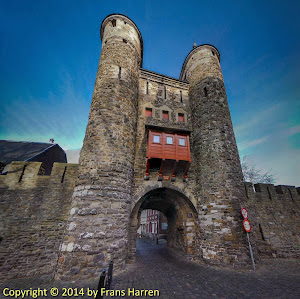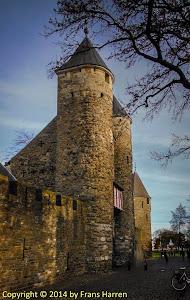Hellgate
The Hellgate is the only spared medieval city gate of Maastricht. The gate is part of the first walls dating from the middle of the 13th century. In the Middle Ages the port was called Hoogbruggepoort because they just lay behind a high Jeker Bridge. The name Hellgate was only created in the 18th century and is derived from the nearby house "In Hell": this house name is more common in forges and bakeries.
Helpoort
The Helpoort is a former city gate in Maastricht, located directly across the Pest Huys. The gate dates from 1229 and is the oldest existing city gate of Netherlands. Until the 18th century the gate was nemed Alde Poort op den Ancker.
History
As a result of gaining city rights, Maastricht also got the right to protect themselves with a city wall. In 1229 the first enclosure, of which the Helpoort was a part. The first wall soon proved too small and they started just west of the Helpoort with the construction of a second wall. Late 14th century, this second wall was completed. Because the course of the river Jeker in time moved to the south, the gate was no longer directly protected by a moat. To solve this problem, the walls of the Nieuwstad was built, which had no gates. The Helpoort lost its traffic function and that is why probably the gate is preserved today.
Use in later times
The gate had been used to store gunpowder, and later, in the late 19th century, converted into a house. In the twentieth century, the area above the port was in use as a studio of the painter Jef Schipper (1910-1967). After some extensive restoration is the gateway for a number of years the home of the Maastricht Vestingstad Foundation. During the summer months it can be visited by tourists. On the floors is an exhibition on the history of Maastricht as a fortified city.
See: wikipedia















0 comments:
Post a Comment